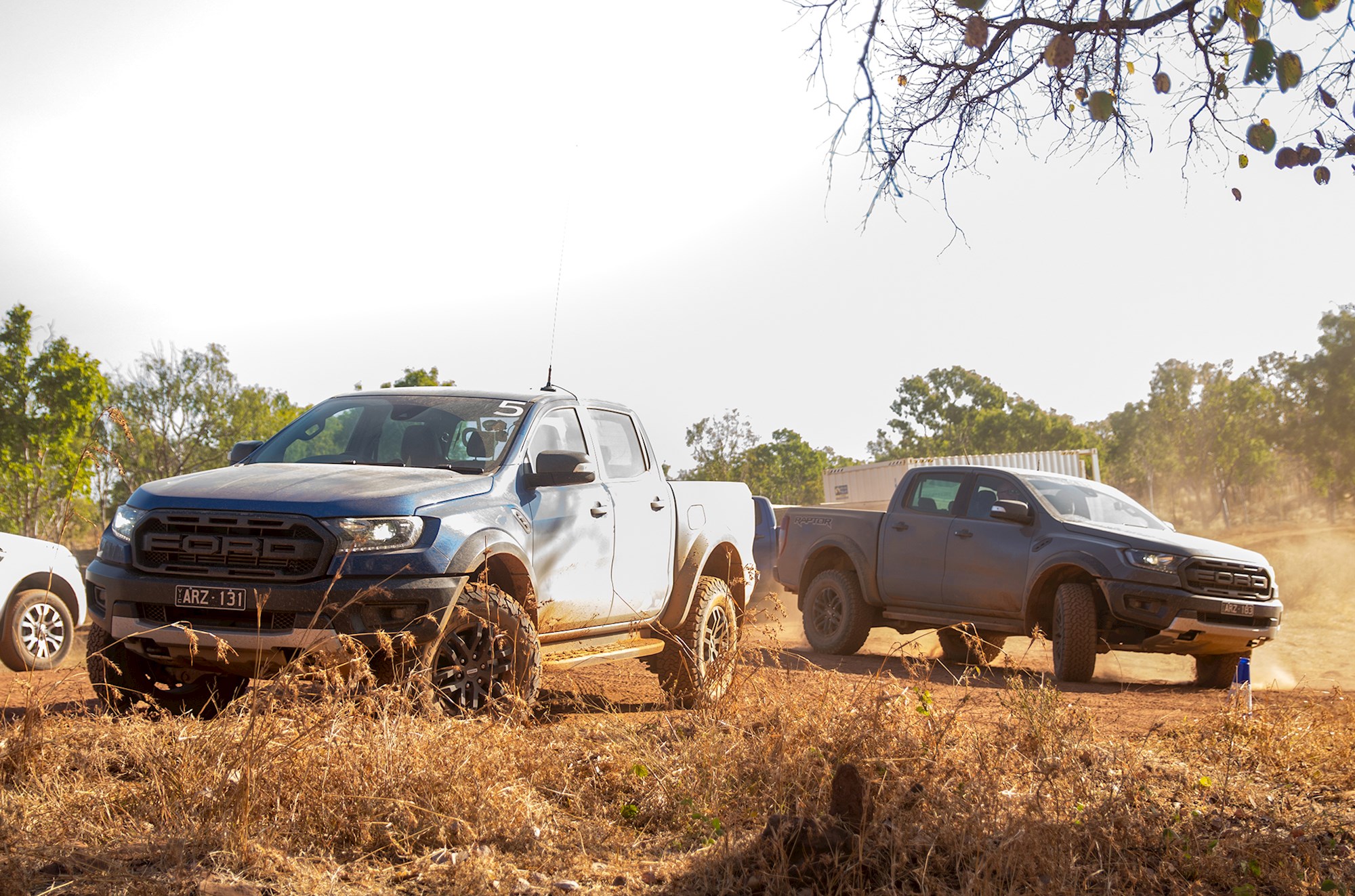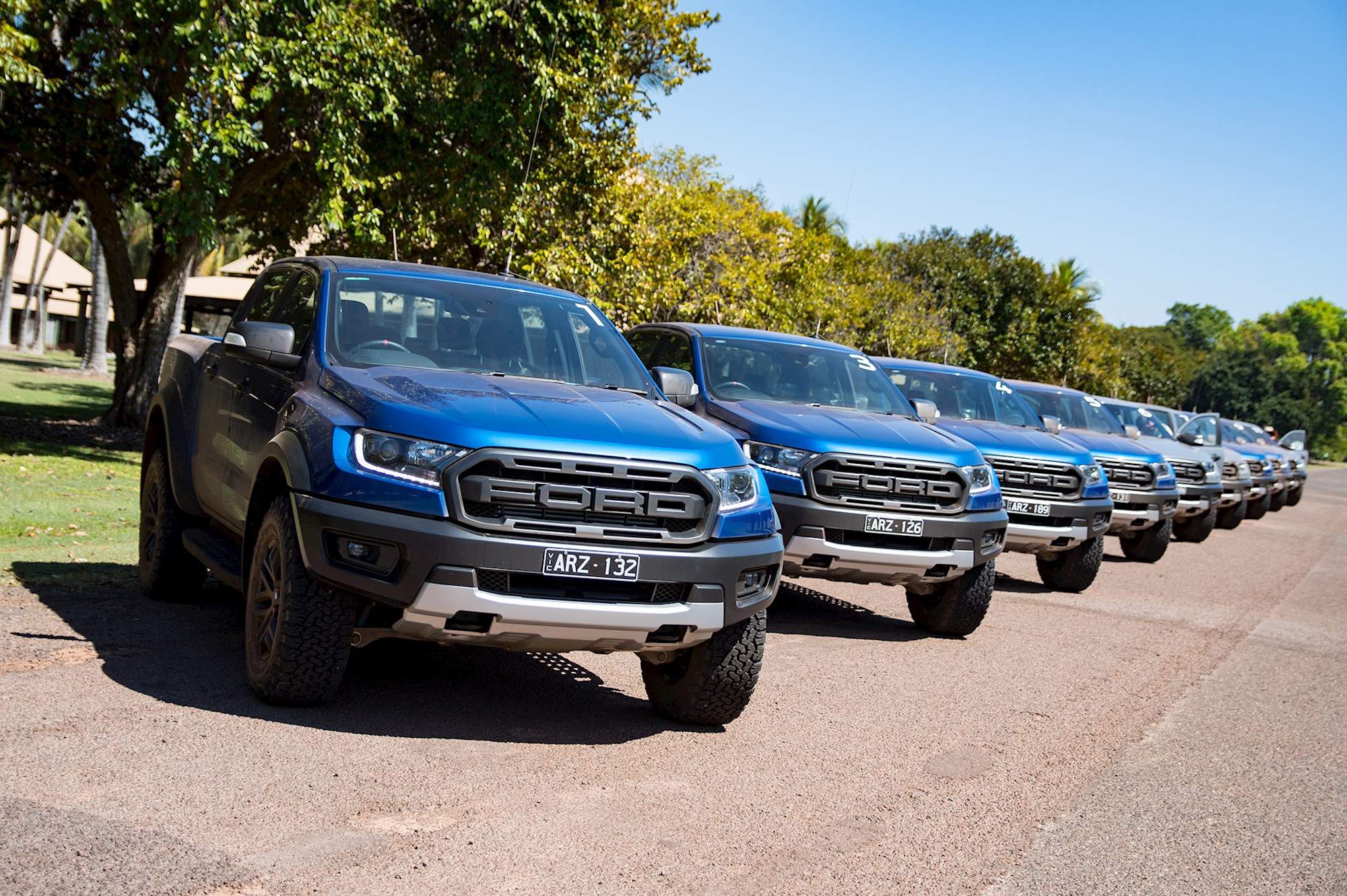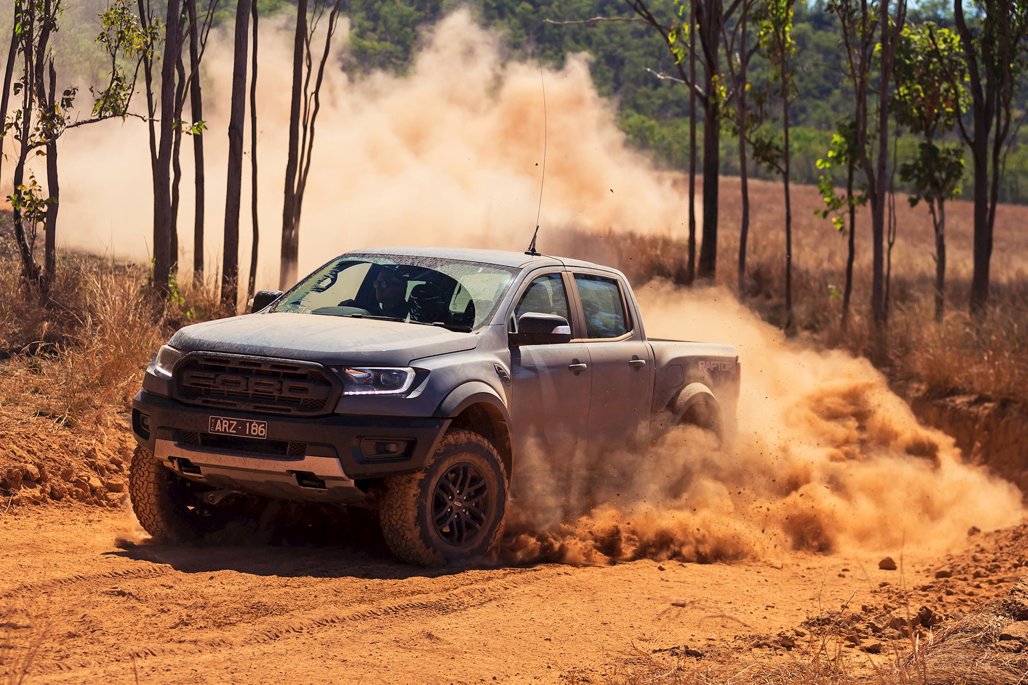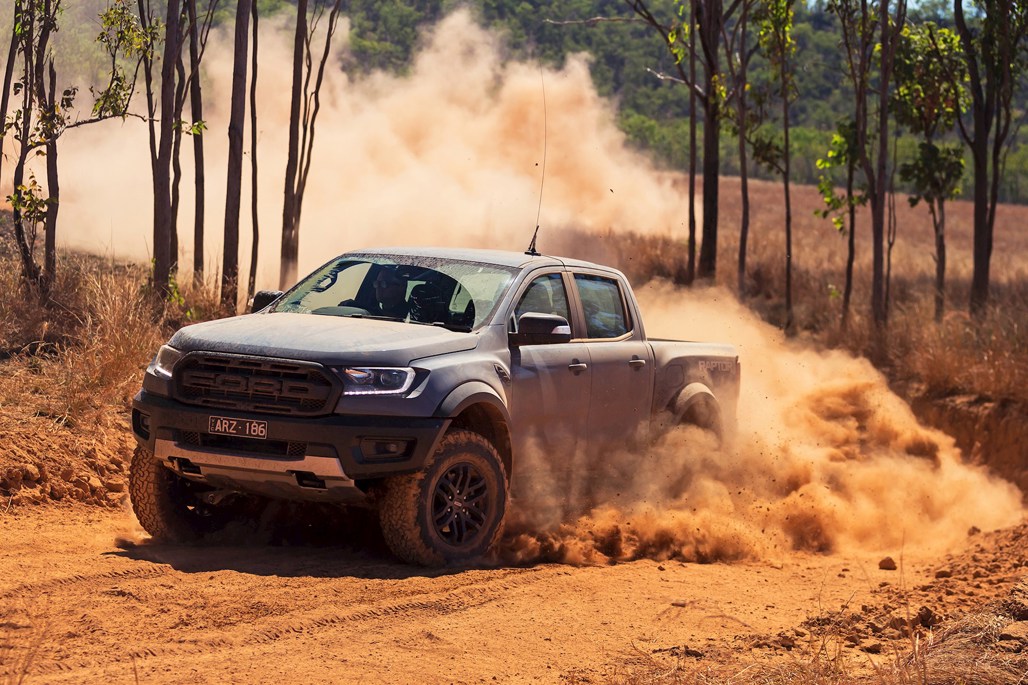Last month was Ford Ranger Raptor fever, with journalists from all over Australia, New Zealand, and Asia all giving the highly anticipated double-cab a thrashing in the Darwin desert.
There were plenty of questions floating around that wild outback launch. Would the Ranger Raptor be exported to the US? Would Ford make an Everest Ranger? Would they make one with a bigger engine?
Would we see any crocodiles or snakes?
While questions two and three were a bust, and question four answered emphatically with a "no" ... we might have an answer to that first one. It looks like the Ranger Raptor is set to be launched in North America.
This hasn't been confirmed by Ford, of course. The news actually comes from documents filed with IP Australia (the administration that looks over intellectual property rights over the ditch) that concern an American design patent, as spotted by CarAdvice.com.au.
Patent drawings in circulation online showcase a raft of Raptor-specific traits; from the bold 'FORD'-emblazoned grill and the rest of the Raptor's chiselled bodywork, to a sports bar and rear-window hatch both unique to the North American version.

While we were diplomatic about the Raptor's 2.0-litre bi-turbo diesel engine at launch, it's not expected to make the trip the US. Americans love their larger engines and tend to have a distaste for diesels. Chances are that a 2.0-litre Raptor would get chased over the boarder before being given a chance to strut its stuff.
The standard North American Ranger will come equipped with a 2.3-litre four-cylinder petrol engine, and it's expected that the Raptor will get something even bigger. Most likely it will get the 2.7-litre turbocharged EcoBoost six-pot that we spit-balled as a good option last month.

It's early days for this story, as most of it remains unconfirmed. But patent filings generally don't happen for no reason, and certain American outlets have been plugging the Ranger Raptor extensively since its Australasian launch.
The biggest story here for Kiwis — should it all come to fruition of course — is the potential for a larger engine in other markets, particularly after Ford were so assured that they wouldn't be able to (or didn't want to) cram a bigger engine under the bonnet.
We'll update when more comes to light.




